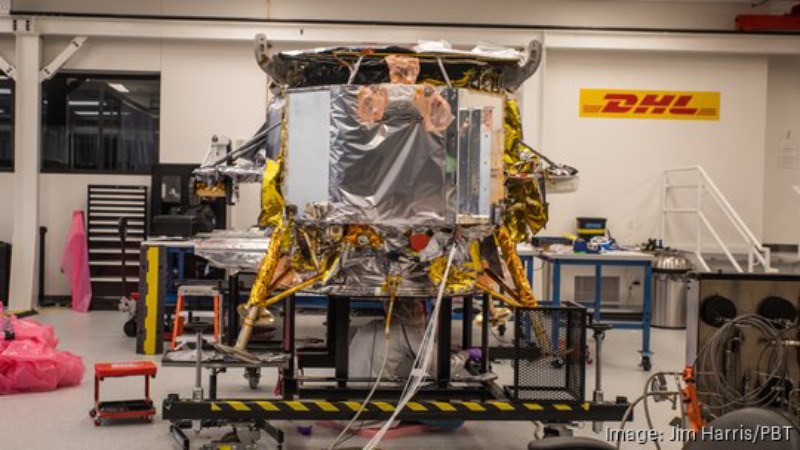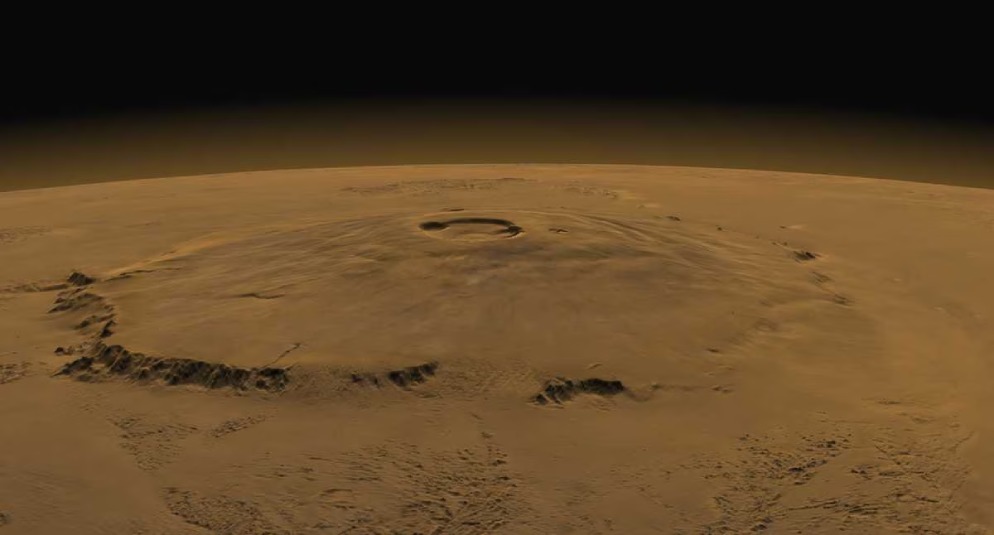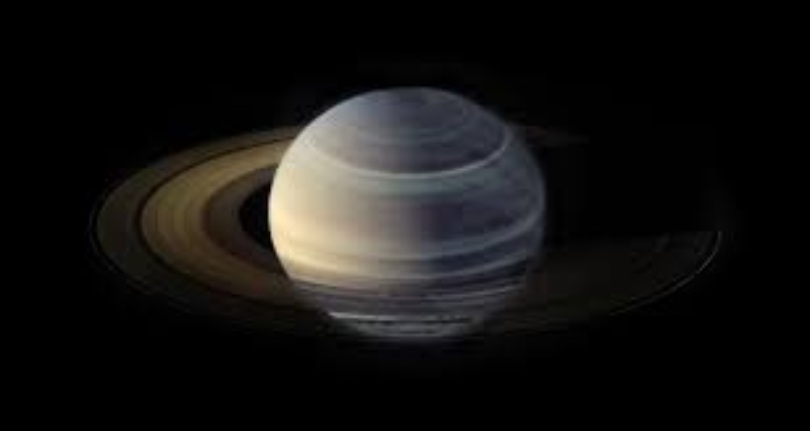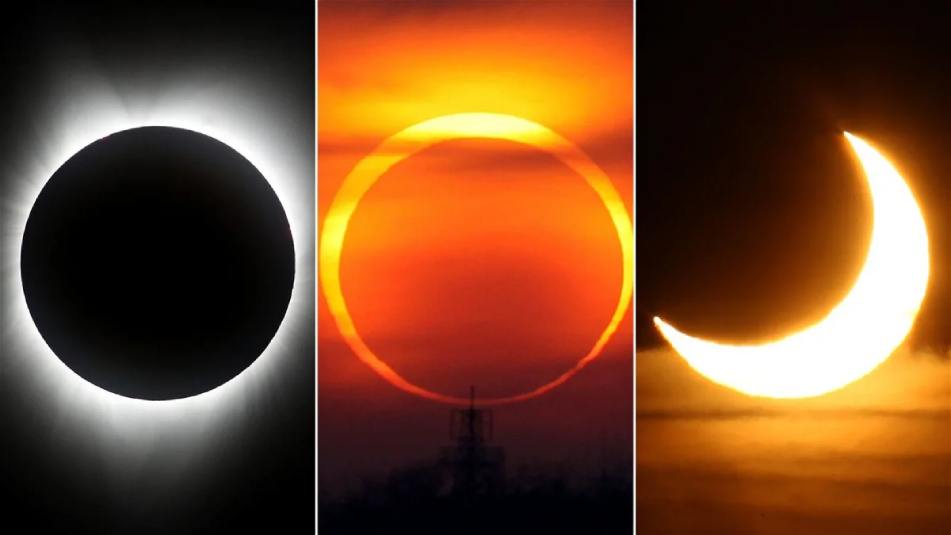NASA is attempting to strike a balance between the science it can do, the difficulties of landing on the moon, and other changing concerns as it gets ready for the first launch of a commercial lunar lander carrying agency-sponsored payloads.
On January 4, United Launch Alliance said that it has finished the launch preparation assessment for the first flight of its Vulcan Centaur rocket, which was assigned the Cert-1 designation. According to that review, the launch is scheduled for January 8 at 2:18 a.m. Eastern time, with an 85% likelihood of favorable weather.
Peregrine, a commercial lunar lander built by Pittsburgh-based Astrobotic, is the main cargo of Cert-1. Twenty payloads are being carried by the lunar lander, five of which are sensors from NASA that were awarded a Commercial Lunar Payload Services (CLPS) contract in 2019.
In order to investigate volatiles like water on the surface and in the moon’s exosphere, three instruments will collaborate: the Near-Infrared Volatile Spectrometer System (NIRVSS), Neutron Spectrometer System (NSS), and Peregrine Ion-Trap Mass Spectrometer (PITMS).
In a media teleconference on January 4, NASA’s Ames Research Center principal investigator for NSS Richard Elphic stated, “We don’t expect natural water at this Peregrine landing location.” The landing site is outside of the polar regions that are believed to contain water and other ices, close to the Gruithuisen Domes. However, he added, “But, the lander will spray-paint the surface with its rocket exhaust during its descent,” which includes water that NSS and the other two instruments could detect.
“May help us better understand how water molecules migrate and possibly end up at the cold lunar poles,” he stated in reference to the three instruments working together.
Carbon dioxide, ammonia, and methane are among the other volatiles that the instruments are capable of detecting, according to Tony Colaprete, NASA Ames principle investigator for NIRVSS. Additionally, it could identify substances that contain sulfur and can withstand greater temperatures. “It will be interesting to see if there is any sulfur at this landing site,” he remarked, referring to the fact that India’s Chandrayaan-3 mission had found sulfur at a latitude of roughly 70 degrees south last year.
Barbara Cohen, chief investigator on PITMS at NASA’s Goddard Space Flight Center, stated, “We’re very interested in understanding the decay of the hydrazine plume from the descent engines.” Along with noble gases, that equipment can identify a variety of volatiles in the exosphere.
The Linear Energy Transfer Spectrometer, a fourth instrument, will monitor radiation both during and after the lander’s journey to the moon and while it is in orbit around it. The fifth sensor is a passive device called the Laser Retroreflector Array. It is comparable to retroreflectors flown on earlier landers, including those from other space agencies, and is intended to support range measurements of the lander.
Five of the ten instruments that NASA had intended to launch on Peregrine were deleted by the agency last year. At a briefing on Nov. 29, agency representatives stated that the removal of those experiments was due to problems with the lander’s performance and the available descent engines.
NASA CLPS program manager Chris Culbert stated at this briefing that the organization was striking a balance between proving the landers could reach the surface safely and conducting the science it wanted to with early lander flights.
“These early missions have some clear science opportunities, but we weren’t being driven by specific science strategies until we were reasonably confident that the marketplace could actually deliver and land on the moon softly,”he added. He also said that more complicated science goals will be included on later CLPS missions.
Concerning the business case for commercial lunar landers, there is considerable ambiguity. He stated, “I don’t think it’s all that clear, certainly to us at NASA,” regarding the markets that will propel demand for these kind of landers. “I think you’ll see that evolve quite a bit over time, but the first step is a successful landing.”
Concerns for the Navajo Nation
Peregrine is carrying payloads from a variety of businesses and organizations, including national space agencies, in addition to the five NASA instruments. Among these are products from two businesses that offer to send samples of cremated remains into space as a memorial: Celestis and Elysium Space.
The Navajo Nation has sharply criticized the payloads, believing that it is an act of desecration to place human remains on the moon. Navajo Nation President Buu Nygren stated last month that he requested NASA to postpone the launch due to those cargoes. He cited a 1998 agreement made during the Lunar Prospector mission, which carried planetary scientist Eugene Shoemaker’s ashes. In response to the Navajo Nation’s objections at the time, NASA stated that it would confer with them prior to any upcoming missions.
Joel Kearns, NASA’s deputy assistant administrator for exploration in the Science Mission Directorate, stated during the Jan. 4 briefing that the organization had received a letter from the Navajo Nation asking for a “tribal consultation” over those payloads. The Federal Aviation Administration, which oversees the Department of Transportation and grants licenses for commercial launches, was also copied on the letter.
He said, “An intergovernmental team is currently looking into this in more detail,” which includes arranging a meeting with representatives of the Navajo Nation. He stated that more information regarding that endeavor, including the potential date of the conference, could not be provided by the government.
NASA is not leading the mission, thus it is unclear what NASA could do about those payloads, as they are being carried out aboard a commercial lander. “These are commercial missions. We don’t have the framework for telling them what they can and can’t fly,” According to him, the FAA would probably provide any such approval through the payload review procedure that is a part of the launch license procedure.
As we have built this up over the last five years, commercial lunar landers “is a totally new industry, and it is an industry where everyone is learning as we have set this up over the last few years,” Kearns continued. “We take concerns like the ones expressed by the Navajo Nation very, very seriously, and we think we’re going to be continuing this conversation.”




